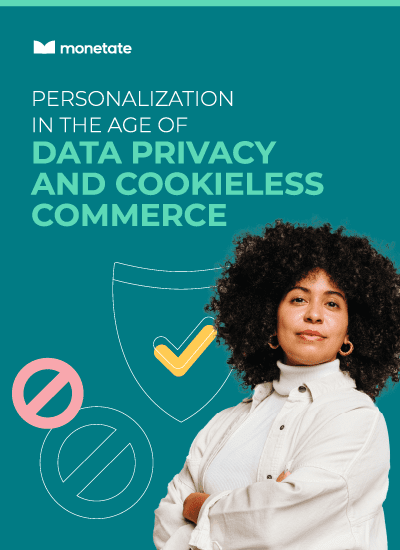
What Do Retailers Need To Know Now About Data Privacy?
Google’s announcement to block third-party cookies on Chrome has sent shockwaves through the eCommerce world. This news has compelled advertisers and brands to rethink their customer targeting strategies. Yet, this move is just another in a series of shifts by tech giants like Apple and Mozilla, prioritizing in-session or on-site data over third-party data gathering.
What implications does this transition hold for marketers, merchandisers, and online businesses striving to deliver personalized experiences to their customers?
To grasp the significance of the current landscape and to anticipate future trends in data privacy, let’s trace the path that led us here and discover next steps.

Historical Background and Trends in Data Privacy
According to Gartner, by 2024, 75% of the global population will fall under data privacy regulations, with Google’s cookie ban affecting over 3.2 billion individuals. The evolution of the data privacy landscape over the past five years has been profoundly influenced by the decisions and innovations of both corporations and governments alike.
In a nutshell, the era of data privacy is upon us, challenging marketers to adapt their strategies to this new paradigm.
In recent years, regulations surrounding data privacy have tightened significantly. Apple’s introduction of ITP 2.0 in 2018 marked a pivotal moment, favoring user session data over third-party information. Now, with Google’s decision to block third-party cookies, this approach to data privacy is becoming mainstream.
As we move further into 2024 and beyond, online brands will need to shift their focus to first-party data from their own customers and site visitors. This means relying less on third-party data collection and more on in-house, first-party insights for personalization efforts.
However, it’s not just tech giants driving these changes. Governments worldwide are implementing regulations like GDPR and CCPA, further shaping the data privacy landscape.
What does data privacy mean for brands today?
The phasing out of third-party cookie support has got more than a few business and marketing leaders worried about how they can continue to personalization their on-site experience.
And it’s certainly true that online brands and retailers will be more constrained in the data that they can collect and store.
Two big issues that merchandisers and retailers must face include:
- Limited Data Collection: With the phasing out of third-party cookie support, businesses will face constraints on the data they can gather and store. This includes the inability to use third-party cookies to track user behavior across the internet.
- Reduced Availability of Third-Party Data: The shift towards session or site-specific data silos means less third-party data will be available for purchase. This poses a challenge for companies accustomed to using third-party data for targeted advertising and personalization efforts.
In essence, businesses must adapt to this new reality by prioritizing first-party data and refining their strategies for data collection and personalization.
Embracing these changes will be key to navigating the evolving landscape of data privacy and maintaining consumer trust in an increasingly regulated digital environment.
But, how can your brand prepare? Check out our guide, “Personalization in the Age of Data Privacy and Cookieless Commerce” for more information.
Personalization in the Age of Data Privacy and Cookieless Commerce
Google’s decision to block third-party cookies in its Chrome browser has caused a huge stir in eCommerce circles. What does this mean for your data?

